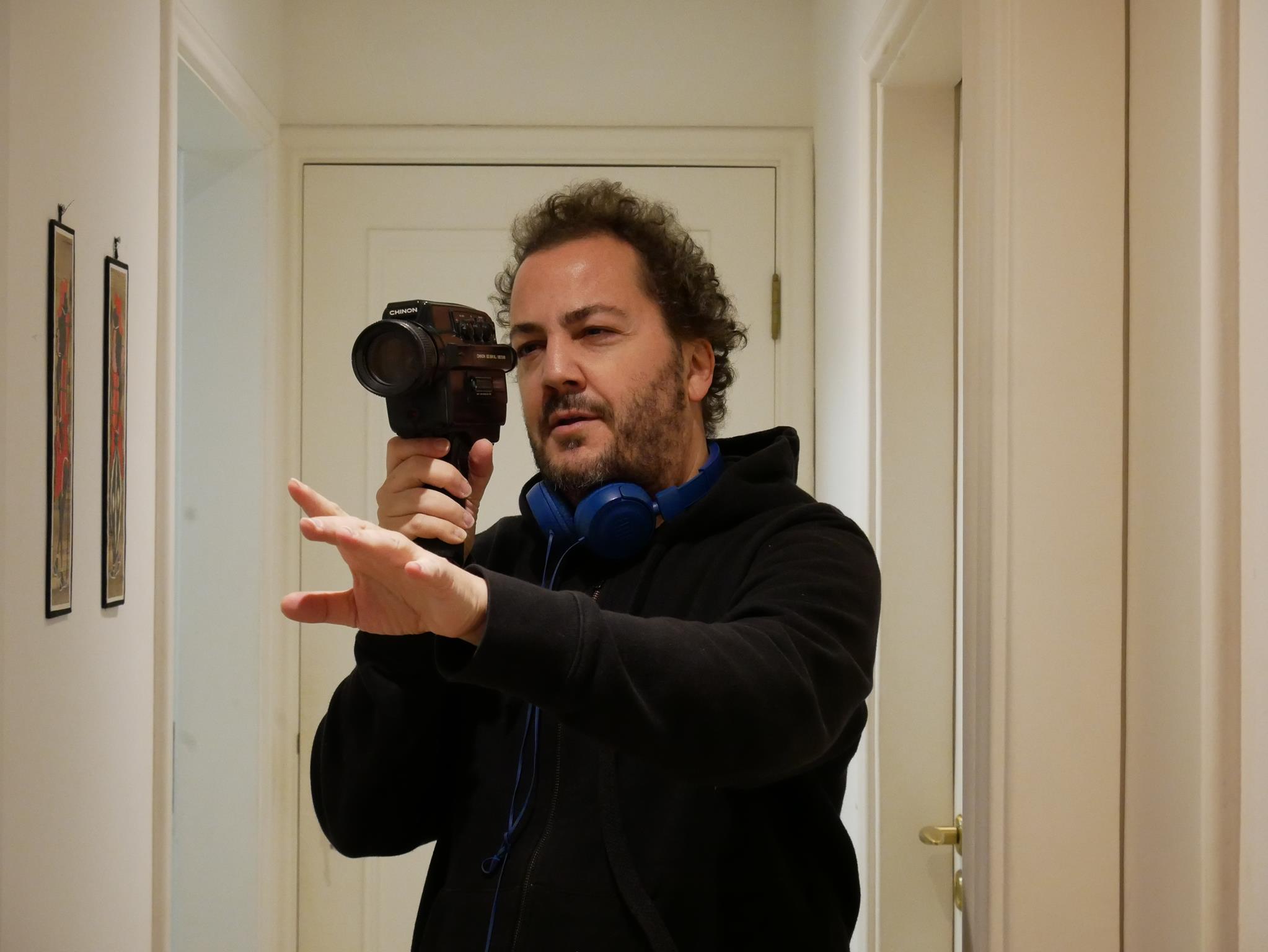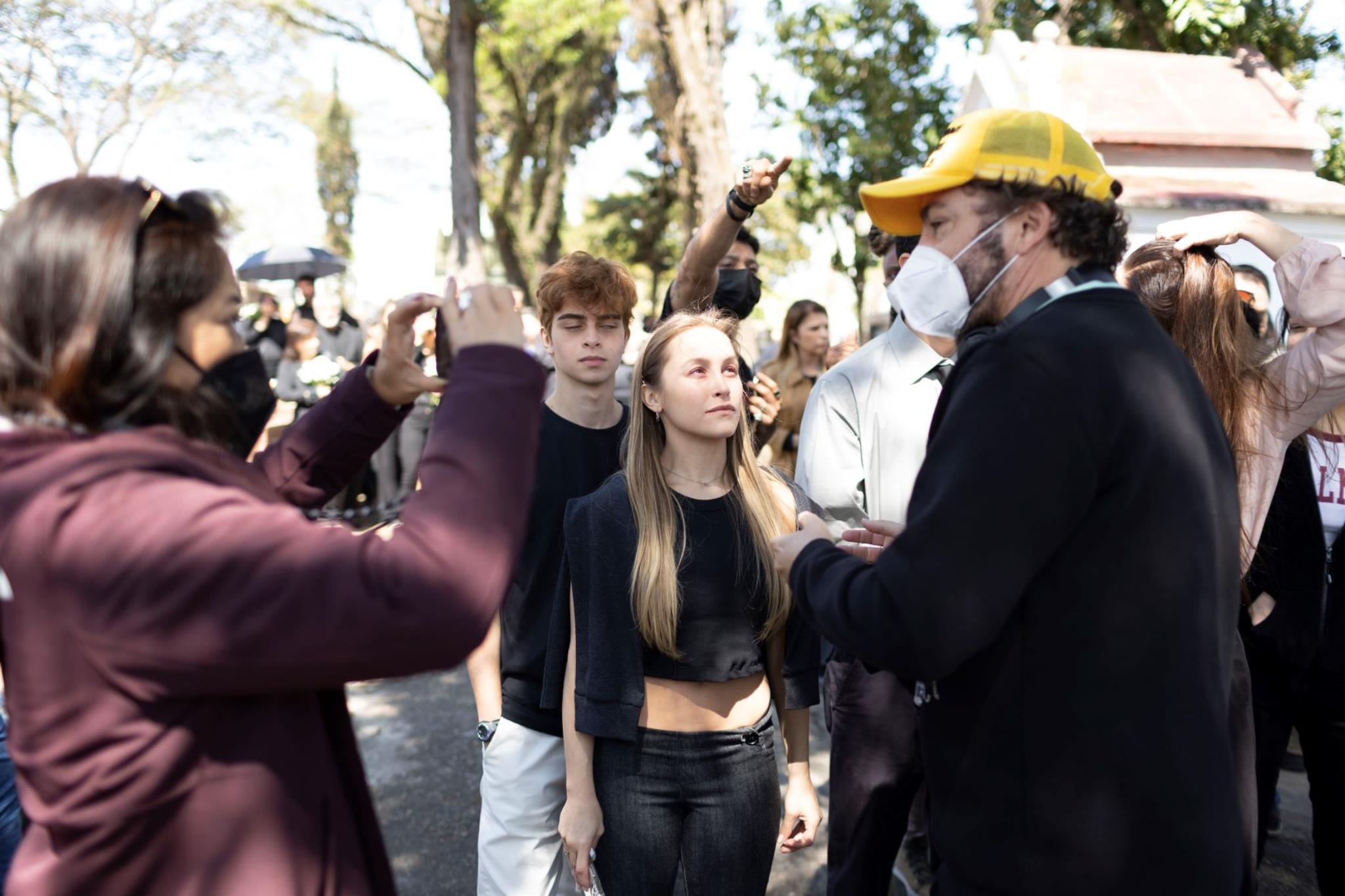
Renowned director Mauricio Eça returns to the cinematic scene with “O Maníaco do Parque,” a project that sensitively explores one of Brazil’s most shocking cases. With a diverse career, Eça has directed everything from children’s productions to true crime feature films. In this interview, he shares the challenges of transitioning between genres and the importance of giving voice to the victims. The director discusses his in-depth research to ensure authentic representation and reflections on social themes that emerge from the narrative. With an innovative perspective and a career marked by impactful stories, Eça continues to transform the landscape of Brazilian cinema. Additionally, Mauricio is one of the most prolific music video directors in Brazil, notably highlighting “Diário de um Detento” by the band Racionais MC’s, recognized as one of the most important music videos in Brazil.
You have worked with a wide variety of genres throughout your career. How is the process of adapting to direct such an impactful film as “O Maníaco do Parque” compared to previous projects like “A Garota Invisível” or “Carrossel”?
It’s interesting to talk about this because, throughout my career, there has always been pressure to label or define my style. When I directed the music video for Racionais MC’s, “Diário de um Detento,” in 1997 (winner of two VMB awards from MTV and recognized as one of the most important music videos in Brazil), and after having directed many other hip-hop videos, I became labeled as a rap video director.
Now, with a filmography that includes 12 films, 4 of which are true crime and 5 are children’s films, many question how I transition from one genre to another so different. I like to say that I am a director driven by challenges, and this genre-switching is something I consider an even greater challenge.
When I directed the “Carrossel” franchise, I understood the importance of connecting with the children’s and youth audience, and more than that, I realized how crucial it was for shaping a national cinema audience. I grew up watching the Trapalhões movies every holiday during my childhood, and in 2016, I saw theaters packed with the premieres of American blockbusters, but without any national films in the spotlight. So directing “Carrossel” was special in that sense: making a quality film, with a universal story, that attracted over 5 million viewers to the two films. It was a very special experience!
Nowadays, I look for projects that explore my expertise and vision, but that also challenge me. I continue searching for new genres, but at the same time, there are still many projects within the genres I’ve already directed that captivate me and make sense to me. I love speaking to children and teenagers, and directing these projects is special for several reasons — perhaps the main one is that they are stories that move and entertain, but also have something more behind them: a lesson or a meaning that guides us. As a filmmaker, I feel that I have a mission to somehow help transform society by generating discussions and reflections.
This was the case with “Turma da Mônica Jovem: Reflexos do Medo,” which for me was a very heartfelt project. It addressed content that was part of my childhood. I was practically taught to read by the genius Mauricio de Sousa’s comics, and being involved in such a special project like this — which is about friendship and, most importantly, is a film about transition, about the challenges of leaving childhood while still carrying our inner child — was something extremely meaningful.
Your new feature film, “O Maníaco do Parque,” addresses a heavy and real subject. How was the research and preparation process to portray this story on screen authentically and sensitively?
This may be, so far, my most complex and challenging project. It took more than 12 months of script development, along with extensive research on the case and, most importantly, on the victims. We consider this film a historical reparation for the victims of the maniac, due to everything they endured — from the sensationalist treatment by the media in the 90s to the failures of the police, who had at least two opportunities to arrest him and could have saved several victims.
Making this film goes beyond understanding the human mind, which is always one of my focuses; it also aims to prevent crimes like this from happening again. In this specific case, the film was made, above all, to give a voice to the women who were victims of this case.
As with all the true crime projects I’ve worked on, this is the fourth film of the genre that I have produced in partnership with Marcelo Braga from Santa Rita Filmes, who has always believed in these projects. We have a standard of care and respect for the story and everyone involved. That’s why we engaged in extensive research and carefully chose which aspects would make sense to be portrayed in the film and from which perspective we would follow.
Although the story was already known, what stood out the most was Francisco’s version, which was widely covered by the press. After analyzing all the research, we understood that this was not the story we wanted to tell.

You are a reference in directing music videos in Brazil, having worked with major names in music. How does this experience in the music industry influence your vision and approach to directing films of different genres?
I have directed over 200 music videos, and for me, it was an extremely enriching experience. In addition to working directly with music, I learned how to use sound to create tension, determine the right moments for silences and pauses, and, above all, the videos provided me with invaluable lessons.
Making music videos is closely tied to experimentation, creativity, and especially the ability to make choices. I emphasize this a lot because I believe that cinema is about that — about your perspective and the decisions you make, understanding what is important to say and how to tell that story in each film. The experience with music videos also gave me agility and dynamism in production, and made me a more versatile director.
The films about the Suzane von Richthofen case brought multiple perspectives on the same crime. How did you balance these viewpoints to create a narrative that captivates the viewer impartially?
When screenwriters Ilana Casoy and Raphael Montes began delving into the trial of the case, they realized that each of the accused (Suzane and Daniel) presented a different version. This was the starting point that transformed one film into two. These two films can be watched individually, but it’s even more interesting to see them as complementary.
The big challenge was understanding and filming the differences in perspectives. The solution was to shoot identically, allowing the distinctions to be noticed by the viewers. Our goal was not to make value judgments but to deliver two seemingly identical films that are completely different in essence.
We filmed both scripts simultaneously. There were days (and there were many) when we shot a scene from one film in a location and immediately after, the scene from the other. Both the crew and the actors had to “switch gears,” especially the actors, who relied on a solid script and detailed preparation before filming to handle this complexity.

“Turma da Mônica Jovem: Reflexos do Medo” won the Grande Otelo for Best Children’s Film in 2024. How was it for you to direct a film based on such iconic characters from the children’s universe?
It was an honor and a great emotion because, as I mentioned before, Turma da Mônica was part of my literacy process. Not only in my life but also in the lives of countless generations. Besides being Brazilian content, it has always addressed important themes and universal values, dealt with rites of passage, educated, and entertained.
I remember when, during the pandemic, I had my first online meeting with Mauricio de Sousa. It was a memorable moment where I could feel his brilliance and perspective on the most important and essential things in the Turma da Mônica universe. The responsibility of directing this film was immense, especially because Turma da Mônica Jovem is a new universe, different from the classic one, with new codes and challenges. It was something very special to see those actors and that universe being translated into images.
Do you believe the Brazilian audience is more receptive to films based on real and controversial cases? How do you see the impact of these themes on the national cinema scene?
Without a doubt, it’s a genre that, according to research, is among the most sought-after by Brazilians. I believe that the prejudice that once existed has changed because people have started to realize that stories like these reflect aspects of our society, leading us to try to understand the human mind so that we can prevent these stories from happening again. Additionally, true crime films end up being a mix of genres, as at different moments they can be more focused on crime, thrillers, or dramas.
What can we expect from your new film, “O Maníaco do Parque”? What were the biggest challenges you faced in telling this story?
It’s a film that brings many reflections on various aspects of society. Reflections on issues that often seem to be on the margins of our lives, but actually deal with essential themes that impact all of us.
The challenge of this project, I believe, was proportional to the result we delivered. We had an extremely careful and intense development, along with a detailed production, since we are talking about a period film, right? This story happened over 25 years ago, and because of that, there are countless details and precautions involved. Sometimes the audience has no idea of the time and number of people involved in a project of this magnitude, but delivering a film with this level of attention and detail is no simple task.
Throughout your career, you have worked on projects with huge repercussions. How do you maintain creativity and innovation in each new work, even after exploring so many genres?
I enjoy the novelty that each project brings, and from there, I seek to understand what is necessary to bring it to life: what we are going to tell, the angle we will take, and how we will do it. Making a film is a collective process, one that is built upon with each journey, and I aim to make each process unique, as the challenges are always different.
A director is like the conductor of an orchestra. I enjoy working with a variety of partners, beyond those I usually trust and know how much they can contribute. This allows me to bring new perspectives and values to each project. Each film has its own nuances and particularities. Each one is like a new magic, a territory to be explored, initially as a deep mystery.
I’m always looking to explore new paths. Currently, besides the genres I’m already familiar with, I’m developing projects in new genres. I always look for stories that have some meaning—whether social, political, or something that sparks reflection in me, and hopefully, in the audience as well.
Follow Mauricio Eça on Instagram


